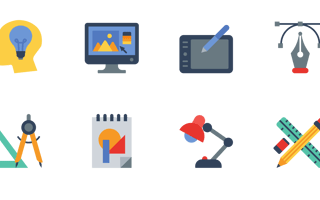Time travel might be an improbable feat. But with a proper design sprint, fast-forwarding into a product’s future is more than possible.
Consisting of five phases (map out, sketch, decide, prototype and test), the design sprint aims to be a quicker, more efficient way of introducing new products or improving current features over a week-long period. By compressing months of time into a shorter window, various teams hope to end the process with a successful failure, a flawed win or a resounding victory.
For more than a decade, the adoption of the design sprint has grown in popularity, and so too have the methods in which it can be conducted. However, every organization differs – and so do its products.
At retail commerce platform OneView Commerce, for example, planning out a diverse cross-functional sprint team can lead to faster idea testing and minimizing waste for both their internal organizations and their clients. It also prevents meeting overload.
“It is not a linear process,” Jennia Williamson, director of product and strategy design at OneView, said. “The design sprint ends with a rough prototype tested from various perspectives, which can be a strong base for learning during future sprints.”
Music software company iZotope approaches sprints differently. According to Senior Design Director Kasia Bytnerowicz, allowing designers to take the reins helps other teams align on design principles and promotes productive discussions over personal preferences.
Built In sat down with the following six designer experts to gather additional insight into their teams’ design sprint processes and the surprisingly beneficial ideas that have come about as a result.
Tips for conducting successful design sprints
- Open communication
- Plenty of prep, research, slide decks and skilled facilitation
- Set context and expectations
- Clear schedules of additional distractions
- Proper problem-framing, clear objectives and early user validation
- Creative flow occurs with planning ahead
- Collaboration between designers and team members working cross-functionally
- Embrace help from additional tech
Pareto Intelligence
Lennox Prince
LEAD UX DESIGNER

What does a typical design sprint look like for your team, and who is involved?
It consists of a five-step process where we dive heavily into understanding the product we are developing or making changes to. The phases of this five-step process are: understand, diverge, decide, prototype and review.
Truthfully, the structure of the Pareto community is key. Once the design team has a thorough understanding of all product features, we create an open communication channel that allows us to collect feedback from multiple cross-functional teams. This open feedback period is crucial to ensuring that we have a strong backing on the product’s overall direction.
What is the key to a successful sprint, and why?
In my time at Pareto thus far, I’ve discovered that the single most important key to a successful sprint is open communication. During our daily standup meetings, we communicate very openly about what is working and what is not, and discuss the ways our team members can assist one another to make sure that our goals are accomplished on time and within spec.
This open feedback period is crucial to ensuring that we have a strong backing on the product’s overall direction.”
What’s the coolest design that has come out of one of your sprints?
The most impactful idea that has come from the design sprints at Pareto has been the redesign of our web application. Not only did it enhance the feel and functionality from a user perspective, but it also created a foundation that has allowed other products to be built on top of it. It has received great reviews both internally and from our clients. If the outcome of this design sprint is only the beginning, I am truly excited to see the response to our future efforts.
Spring Health
Henry Bayuzick
DESIGN MANAGER, MEMBERSHIP EXPERIENCE

First, what does a typical design sprint look like for your team, and who is involved?
Design sprints at Spring Health often stoke excitement across multiple teams. Combining folks from customer support and partnership success with subject-matter experts and members of the product team encourages unique perspectives that lead to fresh ideas and a deeper understanding of users. Separate from the ideas that arise, these sessions have a special quality that exposes the shared passion each individual has for improving mental healthcare.
More tangibly, our design sprints are made up of reviewing the problem space, activities leading to hypotheses and questions, and importantly, time spent together ideating. Most design sprints include a mixture of group work, breakout sessions and individual sketching. Research and validation happen pre- or post-sprint.
Logistically, we tend to run shorter design sprints — usually one-day to three-day events — instead of embracing the five-day design sprint. Over time, we have found the shorter sprints to be easier to schedule and attend while still remaining inspiring. Minimizing the friction of schedule increases the likelihood of facilitating a design sprint and overall contributes to a culture of exploration and collaboration.
What is the key to a successful sprint, and why?
We have found three elements that make sprints successful. First, a design sprint normally warrants a broader problem space that is either net-new or unusually tricky. We like to use sprints for new investments or areas we know our team is excited about.
Second, to run a productive design sprint in a shorter amount of time, plenty of prep and skilled facilitation are required. We often bring research, design Miro boards, and present slide decks to set context and expectations.
Finally, we like to make sure everyone attending has the headspace to focus and explore without worrying about what’s on their calendar. We discourage participants from dropping in and out if they cannot attend the entire session.
3 ELEMENTS OF A SUCCESSFUL SPRINT AT SPRING HEALTH
- A captivating problem space
- Sufficient planning and facilitating
- Clear schedules
What’s the most impactful idea that you’ve seen come out of a design sprint?
Recently one of our designers, Daniela Marmolejos, was leading a short design sprint to align on problems that members have when trying to find the right mental healthcare solution and generate novel ways to improve and personalize their experience. During that session, many cool ideas arose but one that resonated with the entire room was enabling Spring users to see third-party services in addition to Spring’s features that they may be able to use based on the members’ answers to their mental health questionnaire. This would ultimately help find the right option for the member even if it’s not something Spring offers yet. At that moment, everyone was able to empathize with the problem members felt and the solution reflected the group’s desire to find an impactful remedy.
Teachers Pay Teachers
Zakiya Pope
SENIOR UX DESIGNER

First, what does a typical design sprint look like for your team, and who is involved?
Typically a sprint pod consists of an engineering lead, product manager, product designer and one to three engineers at Teachers Pay Teachers. As a team, we jump-start the sprint by mapping out the problem and determining the sprint’s overall goal. We document and capture this information in a product requirements document (PRD) that is owned by our PM. This process helps us to understand our users, define their problems and surface unseen obstacles. Once the PRD is complete, I explore design solutions through ideation – this is my favorite part because I get to create an improved experience for users.
I begin by exploring user journeys to fully map out different paths and, within those journeys, I design wireframes that illustrate how each screen should look. The wireframes can range from low fidelity to full-resolution, which illustrates the exact visuals, typography and hierarchy. After narrowing down several design explorations, I take the designs to a weekly design crit meeting where fellow designers provide design-led, centered feedback. This is a great space for designers to collaborate across projects and talk about all things design! After crit, I iterate on the feedback and present a more curated solution to my pod for discussion.
I explore design solutions through ideation — this is my favorite part because I get to create an improved experience for users.”
What is the key to a successful sprint, and why?
The key to a successful sprint is proper problem-framing, clear objectives and early user validation. Having these three things aligned allows for all core team members to approach their individual task explorations from a unified perspective and leads to a successful sprint.
It is essential to utilize a user-centered approach when problem framing. This approach allows us to better pinpoint users’ wants, needs and existing pain points. It also helps focus my design explorations while still considering all perspectives. Having clear user and team objectives allows us to do three things: quantify the impact the new design experience has on users, determine the quality and measure user satisfaction based on agreed-upon measurable objectives and key results. Early validation allows for a more effective design sprint in many ways. It helps to manage stakeholders’ expectations, define the roadmap and focus design efforts.
What’s the most impactful idea that you’ve seen come out of a design sprint?
Recently, I had the opportunity to design an experience for sellers to see their stores’ Easel data. This was my first time designing for sellers and I was really excited to learn about their experience and pain points on our platform.
As a team, we had our own hypothesis on the ways sellers use their dashboard and product stats page and what data they wanted to see. Even with our insights, we needed to validate these assumptions through user testing, so I created three different design experiences that tested separate approaches to surfacing Easel resource data.
I partnered with our coordinator, PM and researcher to speak with five sellers. We asked a series of questions related to their selling experience and to hear their thoughts on the three design explorations.
The insights that came from this research gave our team tremendous learnings into what sellers do to manage their stores, how they connect with their users, and how sellers evaluate the quality of their resources. Although not all of our assumptions were validated, the learnings were impactful in how we approached the build, future seller tool enhancements and how other teams could approach seller-related features.
Lyra Health
Elina Lin
LEAD PRODUCT DESIGNER

What does a typical design sprint look like for your team and who is involved?
At Lyra Health, we’re solving problems across both client and provider platforms. Any change in the product can affect multiple internal and external parties. Within a design sprint, collaboration between teams such as clinical, provider, product, engineering, data science, and others is critical. By entering a multidisciplinary and creative space, we exponentially improve the product while addressing a broad spectrum of the Lyra ecosystem that would have been challenging to solve alone.
Based on our goals, sprints follow a structured agenda and are timeboxed five to seven days.
AN EXAMPLE OF A DESIGN SPRINT WEEK AT LYRA
- Day 1: Define
- Day 2: Design
- Day 3: Decide
- Day 4-5: Prototype
- Day 6-7: Test and Synthesis
Each day contains a mixture of activities and includes context setting, expert interviews, individual reflections, small group discussions, and a sprinkle of icebreakers and bio-breaks. An interesting agenda keeps creative ideas flowing for sketching blue-sky ideas. At the tail end of the sprint, we decide on solutions to prototype and test with real users so that we can consider them into Lyra’s platforms.
What is the key to a successful sprint, and why?
Like going on a trip, creative flow occurs with planning, which occurs no later than two weeks before the sprint. By defining specific goals, we know who to invite, what activities to timebox, and how to make it meaningful for everyone involved. Getting on the same page about how a design sprint will be beneficial and what will make it successful allows us to be outcomes-driven with flexibility for innovation.
During the sprint, storytelling builds empathy. At Lyra, context setting is especially important as we ask experts to share their knowledge. Whether it’s a deep dive on clinical effectiveness or provider care, bringing life into our client and provider archetypes allows participants to step into their shoes. Between discussions, fun activities spark the creative mindset. While topics surrounding mental health can feel heavy, icebreakers are invitations for everyone to feel comfortable to approach problems in a positive light.
After the sprint, these cross-functional groups are established as key partners to continue the conversation and provide design feedback, discuss user research insights, and share interesting ideas.
Surprises like these show how design sprints are a powerful and effective tool for innovation.”
What’s the coolest or most impactful idea or design that has come out of a design sprint?
When we zeroed in on member engagement, our roadmap was directly affected. What surprised us was not only the diversity of novel ideas generated but also unexpected patterns that emerged to improve member guidance and progress at various touch points. Though this wasn’t something we had set out to solve, it was brought up by the group’s majority after hearing user stories and walking through important areas with our clinical experts. We then tested several of these concepts in a prototype and gathered firsthand accounts from existing members that trended positively. This was especially exciting as it gave us agency to build these features into our platform and helped us dedicate a bigger portion of our design roadmap to consider building larger, end-to-end solutions.
Surprises like these show how design sprints are a powerful and effective tool for innovation. One of my favorite things as a designer is bringing non-design partners along in the creative process to solve complex problems and build together.
iZotope
Kasia Bytnerowicz
SENIOR DIRECTOR, DESIGN

What does a typical design sprint look like for your team and who is involved?
At iZotope, most of our designers are embedded on product teams where they participate in cross-functional sprints, so there isn’t a typical design sprint. The product teams hold Innovation Weeks, which brings together designers, engineers, product managers and marketers. There is usually one designer and six or seven non-designers who break up into teams of two or three for the week. The designer develops a culture of design thinking through a shared understanding of our customers and the problem space. Before each team starts on their project, the designer helps the team define guiding principles that’ll evaluate which solutions to pursue. The designer checks with each team during the week to help refine ideas. They also organize user interviews to validate that the solutions meet the customers’ needs.
In order to give designers an opportunity to work more cross-functionally and on other projects across the brand, we started experimenting with a concept of a Design Week two or three times a year. Design Week gives designers an opportunity to work with other designers on projects of their choice.
What is the key to a successful sprint, and why?
First, it’s the collaboration between designers and those working cross-functionally. We have many creative and talented people across iZotope, and it’s the designers who are encouraged to bring their ideas forward and help them take shape. It is important to start a sprint with a shared understanding of the success criteria. The designers help the team to align on the design principles, and each solution is evaluated based on those. This encourages productive discussions over preferences and focuses the team on the task at hand.
It is important to start a sprint with a shared understanding of the success criteria.”
What’s the coolest or most impactful idea or design that has come out of a design sprint?
An idea that came out of our latest Design Week was an interactive product picker for our website. People new to audio production sometimes have problems figuring out which product to buy. This picker asks them about what type of results they hope to achieve and then recommends the right product or membership. It also helps us learn more about our customers so that we can build better products and offer them articles and videos to help them develop their skills.
OneView Commerce
Jennia Williamson
DIRECTOR OF PRODUCT STRATEGY AND DESIGN

What does a typical design sprint look like for your team and who is involved?
OneView is a fast-paced and distributed company, and we must sustain a highly collaborative and innovative environment while minimizing the meeting and documentation overload. Lean UX practice helps us integrate the design process with a one-week release schedule and Scrum practices.
On average, it takes us a week to complete a design sprint. We start by reviewing the current knowledge base and assumptions with our user advocates, who conduct continuous discovery. Once everyone understands the problem statement and the hypothesis, we start sketching and ideating. At this point, it is not a linear process, which typically involves the following activities: additional discussions with customers to fill in the blanks, architectural review, and a UI Tribe review. All artifacts created through each brainstorming session are shared with everyone. Often these artifacts aren’t pretty, but they help everyone to stay aware of the latest information. The design sprint ends with a better-defined scope and a rough prototype tested from various perspectives, which can be a strong base for learning during future sprints.
What is the key to a successful sprint, and why?
It is crucial to have a highly collaborative and structured environment to design technically sound and marketable solutions that solve real problems. A diverse cross-functional team with a high product IQ and shared understanding can test ideas faster and minimize waste. A pitfall could be meeting overload, so at OneView, we also value structure and processes. Luckily, many great technologies help us collaborate without having a lot of meetings. Even something reasonably low tech as sharing a recording with a voice-over of the latest prototype update ahead of the meeting saves a lot of time.
It is crucial to have a highly collaborative and structured environment to design solutions that solve real problems.”
What’s the coolest or most impactful idea or design that has come out of a design sprint?
One of the most passionate design sprints we have ever had was at the beginning of the COVID-19 pandemic. Food supply disruptions impacted us all, so everyone was committed to helping retailers of all sizes offer curbside pickup while owning the customer journey. The time to ship was our primary constraint, so everyone was hyper-focused and driven. As a result, we came up with several ideas ranging from short to long term: Pick and Pack App, Digital Cart, and Digital StoreFront, all built on top of our headless architecture.





